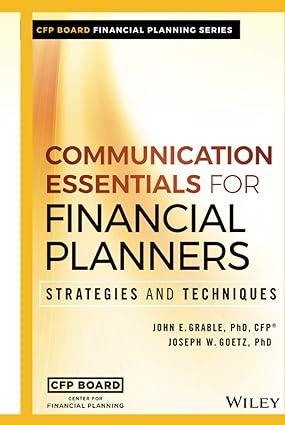Question
Imagine the following scenario: You are an entrepreneur, manager and economist working in the demanding restaurant and food service sector. You own a major retail
Imagine the following scenario: You are an entrepreneur, manager and economist working in the demanding restaurant and food service sector. You own a major retail firm on Curtins largest campus, home to some 50,000 very hungry students who come to campus on a regular and consistent basis. You are known for selling delicious empanadas, pies, pasties, and sausage rolls (including vegetarian /vegan options) and provide this type of hot food stuffs and more for all on campus, including staff, visitors, those in the student accommodation areas, and from neighbouring suburbs. In the first-quarter of 2021, the price you set is $6 for an assortment of these food goodies for lunch (sold as a unit), and the unit costs are a constant at $2. Over the course of the next couple of years, you anticipate and experience some inflationary cost pressures along with stronger demand for your hot foods. By the first-quarter of 2023 your marginal costs have gone up by 15 percent. And so, you reason it would still be profitable indeed for your business to raise the price of your food goodies (sold as a unit) by 35 percent. Besides, other competitors within the same industry as you have been doing roughly the same thing, raising prices for similar products. As an economist of the firm, you will be required to illustrate and explain to a typical first-year undergrad student who has no economics background what has happened to the profitability of your firm from the first-quarter of 2021 to the first-quarter of 2023. To do this, you will draw two (2) sets of isoprofit diagrams*, known in this exercise as diagram 1 and diagram 2. *= The appropriate isoprofit diagram is an adaptation of Figure 7.9d from the CORE ESPP text. An adaptation means that you modify the main diagram from the text to suit the case study at hand, i.e. for hot food stuffs.
Based on this discussion and economic theory, explain and compare in some detail the amount of profit (producer surplus) and markup in diagram 1 and 2.
Step by Step Solution
There are 3 Steps involved in it
Step: 1

Get Instant Access to Expert-Tailored Solutions
See step-by-step solutions with expert insights and AI powered tools for academic success
Step: 2

Step: 3

Ace Your Homework with AI
Get the answers you need in no time with our AI-driven, step-by-step assistance
Get Started


